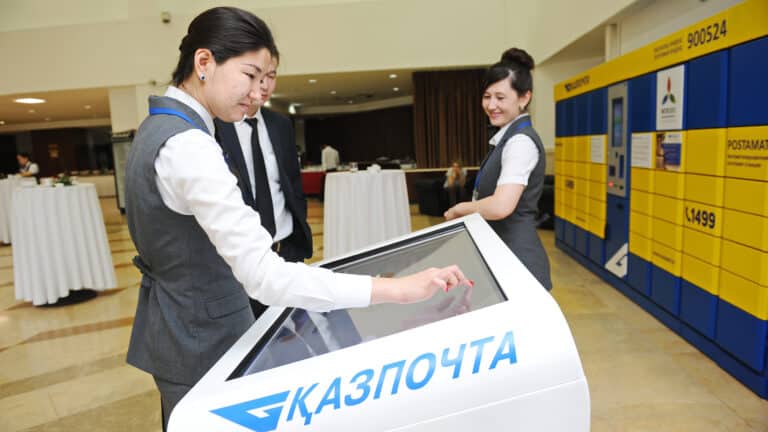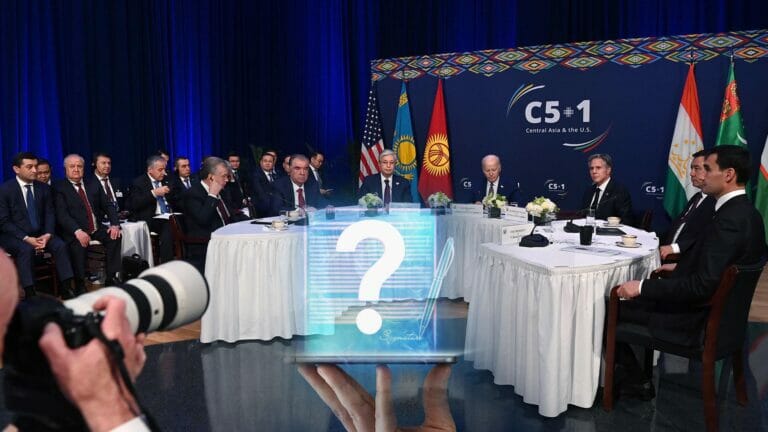As of March 9, 2022, one Russian ruble costs 4.16 Kazakhstan tenge. Since the beginning of the year, the Russian currency has lost 27.8% of its value. This is not a record though. Over the period from December 2014 to August 2015, the official exchange rate of the Russian ruble dropped from five tenge to 2.8-3.7 tenge per ruble. That decline was directly linked to the devaluation of the ruble and the intention of the National Bank of Kazakhstan to keep the parity between the two currencies.
Amid sharp devaluation of the ruble and quite a strong tenge, the real cost of Russian goods and assets also declined back then. Many Kazakhstani citizens rushed to Russia where they scooped up almost everything from home appliances and cars to real estate.
Due to the low prices of Russian imports in tenge over spring-summer 2015, Kazakhstan reported deflation during that period while the yearly inflation slowed from 7.6% in November 2014 to 3.8% in August 2015.
At the end of August 2015, the National Bank had allowed the exchange rate of tenge to free-float and the ruble got stronger once again: at the end of that year, one ruble cost 4.8 tenge.
Some commentators and bloggers believe that the current devaluation of the ruble is similar to the 2015 scenario when a weak ruble caused an influx of cheap Russian imports and hurt local producers. However, experts who talked to the Kursiv edition have no doubts that that scenario won’t happen again.
«The situation of 2022 is different from the situation in 2014. Today, the tenge loses its value due to speculative demand. Amid sanctions and high demand for goods inside Russia, we expect significant inflationary pressure,» said Galim Khusainov, head of Bank CenterCredit.
New normal
«Many in Kazakhstan worry that the country may face a huge influx of rubles when Russia decides to withdraw rubles to Kazakhstan to change them for the US dollars. Also, there are concerns that it may affect the exchange rate of the national currency. However, Kazakhstan has a market economy and no one buys rubles under gunpoint. The National Bank has never intervened trade with rubles,» noted Timur Turlov, CEO of Freedom Holding Corp.
Turlov believes that the influx of rubles to Kazakhstan may have a positive balance in the short term. First, it will cause cheaper imports and slow inflation. «Before now we used to sell dollars to pay for goods imported from Russia. Now we can pay directly at the best rates,» he added.
In 2021, the trade deficit between Kazakhstan and Russia reached $10.4 billion. The lion’s share of imports from Russia is paid by Kazakhstan in rubles (77%) while only 17% is paid in dollars (as of 3rd quarter 2021). In terms of export payments, the US dollar counts for 57% and the ruble 42%.
The second positive moment is decreasing the cost of servicing the public sector and private companies’ liabilities, which have been formed in rubles. It must lead to less pressure on companies’ balances and ease servicing public debt.
As of the 3rd quarter of 2021, the cumulative external debt of Kazakhstan to Russia is $10.9 billion. The government debt is about $1 billion while non-financial organizations and direct investments account for the bulk of the external debt – $7 and $2.5 billion respectively. In the context of currencies, the ruble makes 2.1% ($3.6 billion) of the cumulative external debt of Kazakhstan. Even assuming that the entire debt in rubles has been aggregated by residents of Russia, only a third of the debt to Russia is nominated in rubles.
«We will buy rubles cheap and our residents will pay down their debts to Russia with the help of these rubles. On the other hand, the Ministry of Finance of Kazakhstan also has debt in rubles and now it can pay the debt at the best rate,» highlighted Turlov.
In September 2020, the Ministry of Finance issued on MOEX and AIX 40 billion rubles worth of coupons with a maturity of 5, 7 and 10 years and 5.4%, 6.5% and 7% interest rates, respectively. These figures are already lower than the inflation rate in Russia.
New opportunities
«Once we no longer need rubles we can just stop buying them. However, it is an unlikely scenario,» said Timur Turlov.
«The strong tenge is more suitable for Kazakhstan now. We have to take into account that sharp devaluation will hit the population’s income. However, the government should use only market tools including non-monetary to support the national currency. For example, the authorities may want to revise national programs which stimulate imports; to expand the supply of foreign currency from exported and the National Wealth Fund in order to mitigate speculative shocks or by introducing more efficient compliance-control over non-residents,» said Galim Khusainov.
«Now we have to make a historical choice. If the West decides that Kazakhstan is pro-Russian territory, we may face the same level of isolation, devaluation and inflation. The Eurasian Customs Union can bring Kazakhstan down with it,» noted Andrey Timchenko, chief executive director of Alfa Bank in Kazakhstan.
However, if Kazakhstan demonstrates real neutrality and independence, there is a historical chance to act like a bridge between the West and Russia exactly like Hong Kong and Singapore at some point had acted between western countries and China.
«Many companies in Russia are weighing the possibility to move a big part of their business and personnel to Kazakhstan. Under this scenario, the exchange rate of tenge will be able to keep its value and stand against inflation and economic downturn. High oil prices will be helpful as well,» he said.













